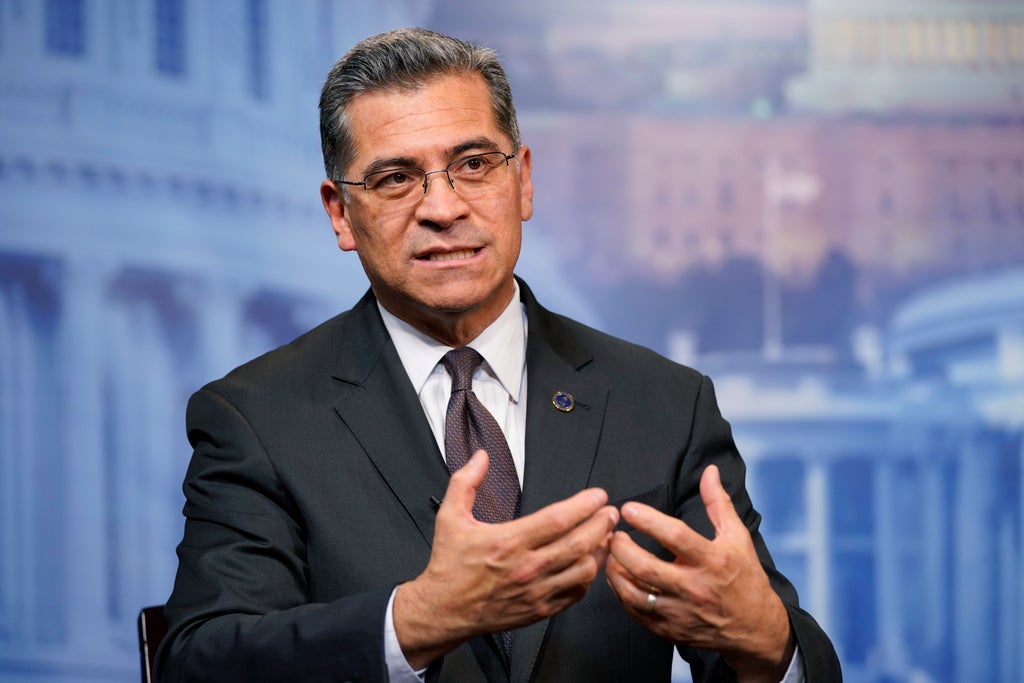
Later this year, federal health authorities are expected to declare an end to the public health emergency around the COVID-19 pandemic. Major disruptions to Medicaid could be an unintended consequence.
An estimated 15 million low-income people enrolled in the state-federal health insurance program will have to find other sources of coverage. Here are strategies for reporting on the potential upheaval, as well as some background on the situation.
It's happening because after the health emergency ends, states will again be able to drop from the rolls people who no longer meet income and other requirements. Medicaid now covers around 79 million Americans, a record that's partly tied to the pandemic.
Congress increased federal Medicaid payments to states because of COVID-19, but it also required states to keep people covered. In normal times states routinely cull those no longer eligible. That process will switch on again when the health emergency ends, and some states are eager to move forward.
The emergency declaration currently lasts through April 16, and the Department of Health and Human Services is expected to extend it for another 90 days. It's possible that by this summer, states may be able to resume cutting Medicaid coverage for those no longer eligible.
A study by the nonpartisan Urban Institute think tank estimated that of the 15 million people who could lose Medicaid, virtually all would be eligible for some other coverage. That's either through employers, the Affordable Care Act, or for kids, the Children’s Health Insurance Program.
But it's not a lock. People dropped from Medicaid may not realize they can pick up taxpayer-subsidized ACA coverage.
And, unlike other health insurance options, Medicaid is usually free. Some people may pass up an offer of workplace insurance if it means paying premiums.
It's also possible states could make mistakes and disenroll people who still qualify.
Uninsured numbers could rise noticeably, with political consequences for state and federal lawmakers.
FRAMING THE STORY
Medicaid is a weedy subject, but having health insurance through the program can literally mean life-or-death for individuals. For example, Medicaid is the single largest payer for substance abuse and mental health treatment.
Start by reaching out to your state Medicaid agency to find out how many people could lose coverage once the “continuous enrollment” requirement is ended and states start processing “redeterminations.”
States use multiple sources of information to track their enrollee population, so it's likely that Medicaid agencies will have a pretty good idea of the potential impact.
Some questions to ask:
— Does the state have any projections for how many people might be dropped from Medicaid?
— What specific steps is your state planning to take to inform people whose benefits may be affected? Are they reaching out by mail? By text? By email?
— What's the state doing to prevent people from being dropped due to administrative errors or miscommunication?
— How will your state inform Medicaid recipients that they could be eligible for another type of coverage? Will caseworkers help to make connections?
— How long has your state been planning for this transition? How does it compare to other neighboring states?
— How can people appeal if they lose Medicaid?
A key question is how much time states are giving themselves to carry out the transition. Generally, if a state is allotting more time, the process is likely to be more forgiving.
Reach out to lawmakers on legislative committees that oversee health care. Reach out to your state hospital association, health insurers who provide coverage to Medicaid recipients, as well as policy experts at universities and colleges, and community and activist groups.
STORY IDEAS
— States that have expanded Medicaid to cover more low-income people may have more options to cope with the unwinding. It may be possible to compare and contrast nearby states, ones that expanded Medicaid and ones that did not.
— President Joe Biden's coronavirus relief bill greatly increased financial assistance under the Affordable Care Act, making “Obamacare” a much better deal for a bigger number of people. The catch: The enhanced subsidies last only through the end of 2022 unless Congress makes them permanent or extends them. If assistance gets dialed back, that most certainly will make a difference in how many people who lose Medicaid wind up uninsured.
— Once your state Medicaid agency starts sending out warnings about coverage, connect with individuals and families who could lose benefits. Find out what they plan to do.
— Children who lose Medicaid are more likely to be able to stay covered, thanks in large part to the Children's Health Insurance Program. You could get families where the kids are going to be fine, but the adults will wind up uninsured. What if the parents have ongoing medical issues that require attention so they can keep taking care of the kids?
— Some people losing Medicaid may have an offer of employer coverage but opt to go uninsured. What does that calculus look like?
FINDING THE DATA
The nonpartisan Kaiser Family Foundation recently published an in-depth survey of states, focusing on preparations for the end of the public health emergency. Tables 12-18 in the back contain detail about individual state plans, and other tables provide background on states’ Medicaid programs. Medicaid can differ significantly from state to state.
The Kaiser Foundation report can be found here:
https://files.kff.org/attachment/REPORT-Medicaid-and-CHIP-Eligibility-and-Enrollment-Policies-as-of-January-2022.pdf
A press release summarizing the report, along with a media contact, can be found here:
https://www.kff.org/medicaid/press-release/states-are-planning-for-the-end-of-the-continuous-enrollment-requirement-in-medicaid-after-the-covid-19-public-health-emergency-expires-but-many-have-not-made-key-decisions/
A good overview of the situation is contained in the Urban Institute report, which can be found here:
https://www.urban.org/research/publication/what-will-happen-unprecedented-high-medicaid-enrollment-after-public-health-emergency
Concerned about potential disruptions, the federal Centers for Medicare and Medicaid Services has issued guidance to states on how to avoid them. That can be found here:
https://www.medicaid.gov/federal-policy-guidance/downloads/sho22001.pdf







